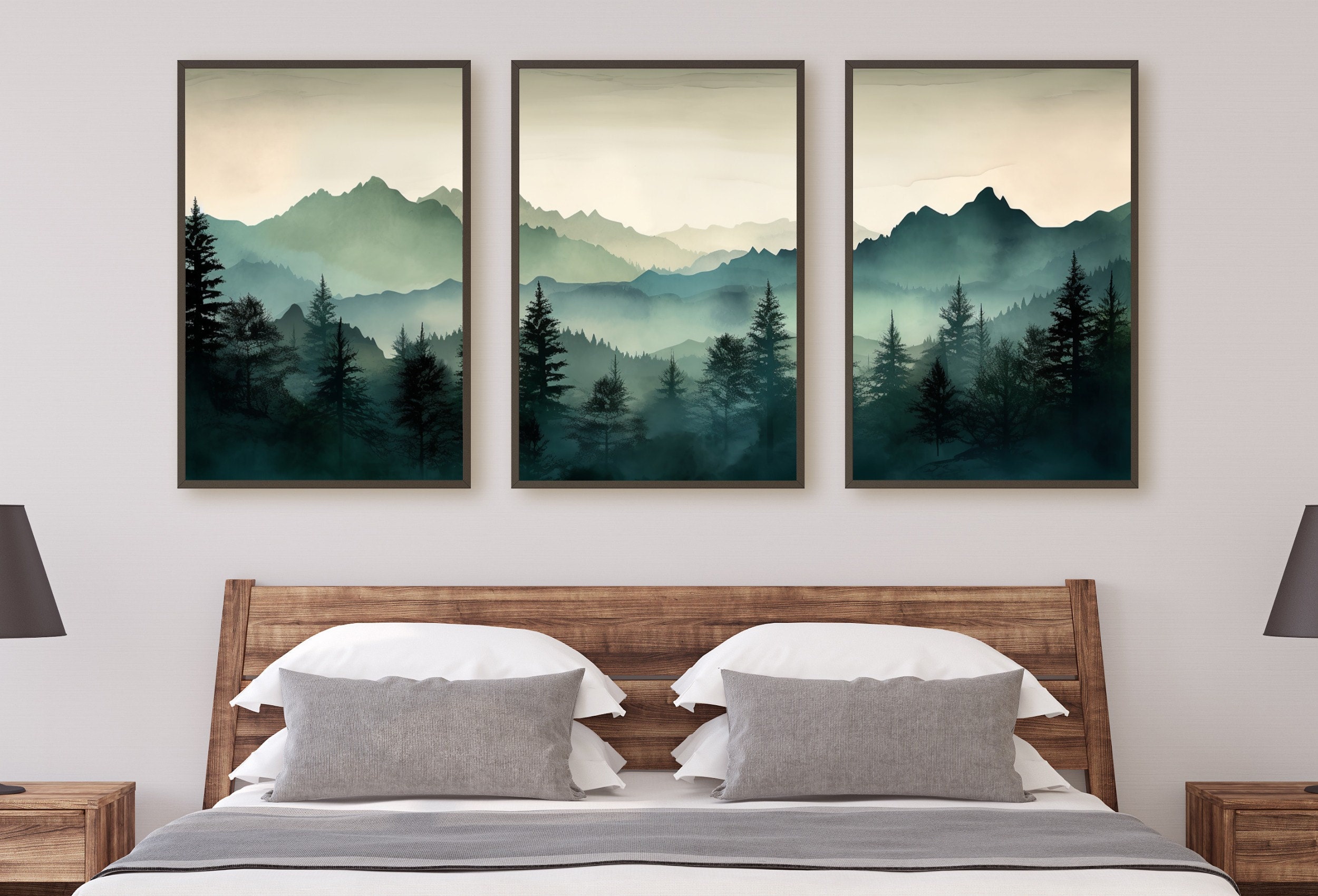If you are an art lover, you might have some amazing printable artworks that you downloaded from the internet or created yourself. These artworks are digital files that you can print on various materials and use them for different purposes. But how can you print and display your printable artworks like a pro? In this blog post, I will share some tips and tricks for printing and displaying printable artworks on different materials, and what is best for what room.
Printing Materials
There are several materials that you can print your printable artworks on, depending on the quality, cost, and effect that you prefer. Here are some of the most common materials:
Paper: Paper is the most basic and versatile material for printing artworks. You can choose from different types of paper, such as matte, glossy, textured, or cardstock, and different weights, such as 80gsm, 120gsm, or 200gsm. Paper is easy to print, cut, and frame, and it is suitable for most artworks, especially those with fine details and colors. Paper is also relatively cheap and widely available, but it is not very durable and can fade or tear over time.
Canvas: Canvas is a fabric material that is stretched over a wooden frame and coated with a protective layer. Canvas is ideal for printing artworks that have a painterly or artistic feel, such as photos, paintings, or illustrations. Canvas is more durable and resistant to fading than paper, and it gives a textured and dimensional look to your artworks. Canvas is also easy to hang and display, as it does not require a glass cover or a frame. Canvas is more expensive and heavier than paper, and it may require special care and cleaning.
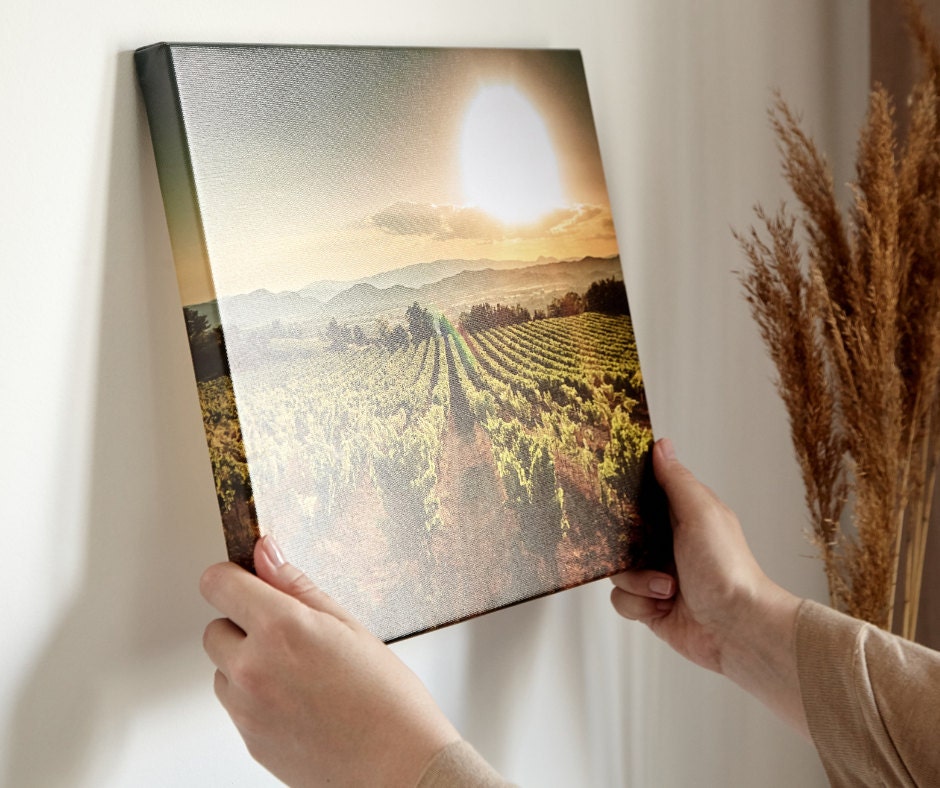
Metal: Metal is a material that is made of aluminum or steel and coated with a glossy or matte finish. Metal is perfect for printing artworks that have a modern or industrial style, such as abstract, geometric, or minimalist designs. Metal is very durable and resistant to water, scratches, and UV rays, and it gives a sleek and shiny look to your artworks. Metal is also easy to hang and display, as it comes with pre-drilled holes or a metal stand. Metal is more costly and heavier than paper or canvas, and it may reflect light and glare.
Wood: Wood is a material that is made of natural or engineered wood and coated with a glossy or matte finish. Wood is great for printing artworks that have a rustic or natural style, such as landscapes, animals, or botanicals. Wood is durable and resistant to water and UV rays, and it gives a warm and cozy look to your artworks. Wood is also easy to hang and display, as it comes with pre-drilled holes or a wood stand. Wood is more expensive and heavier than paper, but cheaper and lighter than metal, and it may have natural variations and imperfections.
Glass or Acrylic: Glass or acrylic are materials that are made of transparent or translucent plastic and printed with UV or digital printing. Glass or acrylic are perfect for printing artworks that have a clear or glossy style, such as photos, logos, or text. Glass or acrylic are durable and resistant to scratches and UV rays, and they give a smooth and shiny look to your artworks. Glass or acrylic are also easy to hang and display, as they come with holes, hooks, or stands. Glass or acrylic are more expensive and heavier than paper, they can create a 3D effect with your artworks.
Tapestries: Tapestries are a material that is made of woven fabric and printed with sublimation or digital printing. Tapestries are ideal for printing artworks that have a bohemian or eclectic style, such as mandalas, florals, or quotes. Tapestries are durable and resistant to water and mildew, and they give a soft and cozy look to your artworks. Tapestries are also easy to hang and display, as they come with loops or grommets. Tapestries are perfect to cover large areas of your walls.
Displaying Options
There are also several options for displaying your printable artworks on different materials, depending on the size, shape, and style of your artworks, as well as the space and decor of your room. Here are some of the most common options:
Frame: Framing is the most traditional and popular option for displaying artworks. You can choose from different types of frames, such as wood, metal, or plastic, and different colors, such as black, white, or gold. You can also choose from different types of glass covers, such as clear, frosted, or anti-glare. Framing is suitable for most artworks, especially those printed on paper, and it gives a polished and professional look to your artworks. Framing is also easy to hang and display, as it comes with hooks or wires. Framing is more expensive and heavier than other options, and it may require regular dusting and cleaning.
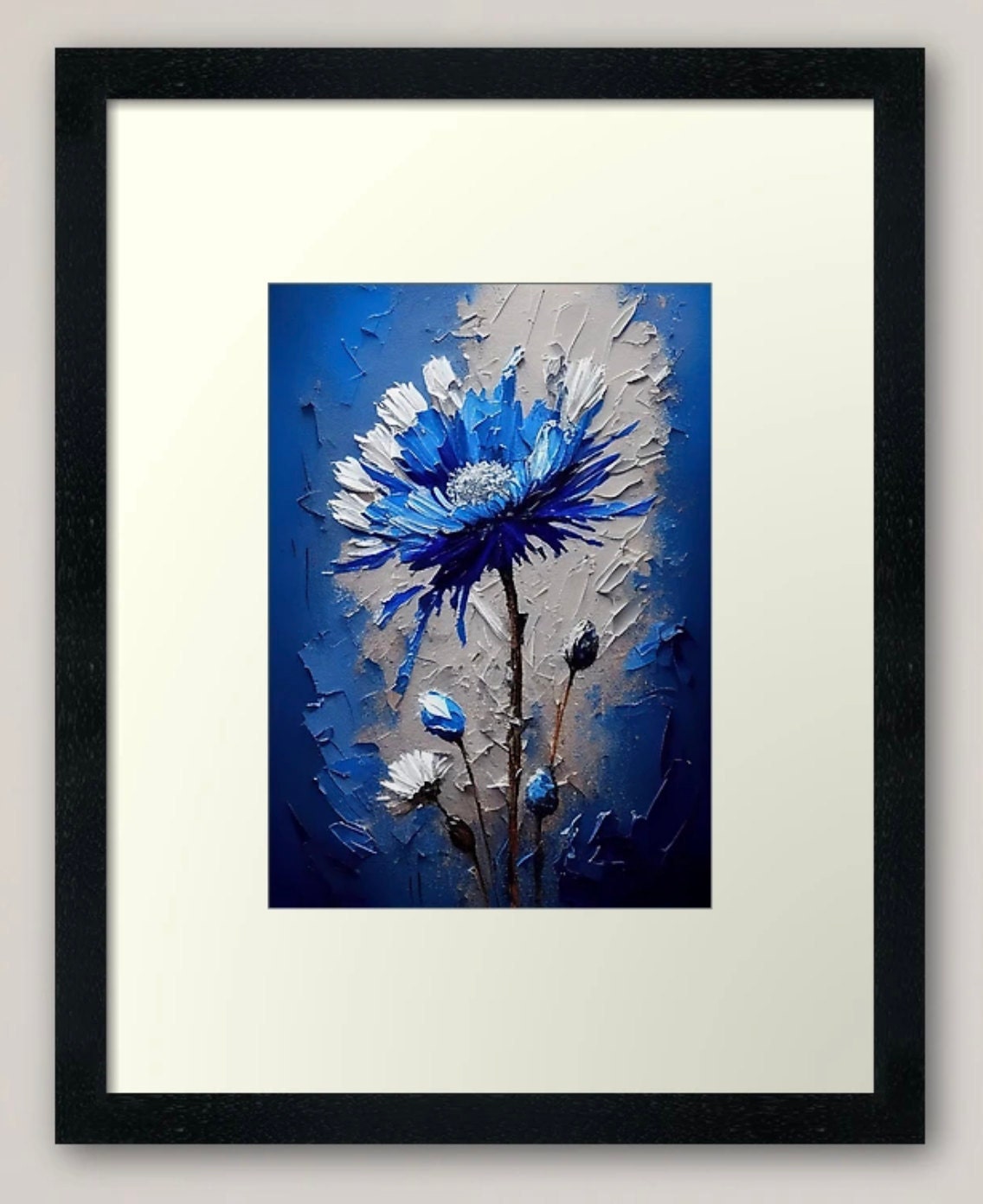
Clip: Clipping is a simple and minimalist option for displaying artworks. You can use different types of clips, such as binder clips, bulldog clips, or magnetic clips, and different colors, such as silver, black, or gold. You can also use different types of strings, such as twine, ribbon, or wire, to hang your artworks. Clipping is ideal for small or medium artworks, especially those printed on paper, and it gives a casual and creative look to your artworks. Clipping is also easy to hang and display, as it does not require any tools or hardware. Clipping is cheaper and lighter than other options, but it may not be very secure or stable.
Tape: Taping is a fun and trendy option for displaying artworks. You can use different types of tape, such as washi tape, masking tape, or duct tape, and different colors, patterns, or designs. You can also use different ways of taping, such as corners, edges, or shapes, to create different effects. Taping is perfect for small or medium artworks, especially those printed on paper, and it gives a colorful and playful look to your artworks. Taping is also easy to hang and display, as it does not require any tools or hardware. Taping is cheaper and lighter than other options, but it may damage your walls or your artworks.
Place: Placing is a simple and elegant option for displaying artworks. You can use different types of furniture, such as shelves, tables, or desks, and different accessories, such as easels, stands, or trays, to place your artworks. Placing is suitable for small or medium artworks, especially those printed on canvas, metal, or wood, and it gives a subtle and sophisticated look to your artworks. Placing is also easy to display, as it does not require any tools or hardware. Placing is cheaper and lighter than other options, but it may take up more space and be less visible.
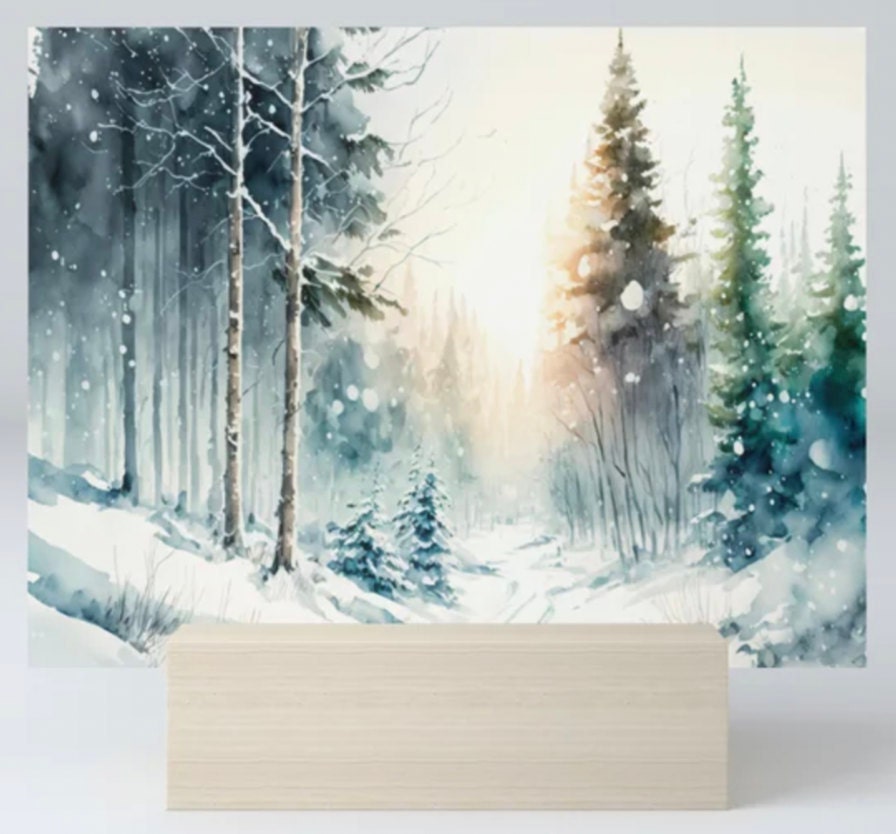
Choosing Artworks for Different Rooms
When choosing printable artworks for different rooms in your home, you should consider the function, mood, and style of each room, as well as your personal preferences and tastes. Here are some general tips and examples for choosing artworks for different rooms:
Baby or Kid Room: For a baby or kid room, you should choose artworks that are colorful, playful, and educational. You can use printable artworks that feature animals, cartoons, alphabets, numbers, or shapes, to stimulate the imagination and learning of your child. You can also use printable artworks that have positive messages, quotes, or affirmations, to inspire and motivate your child. You can print your artworks on paper or canvas, and display them with frames, clips, or tape. You can also use printable artworks that match the theme, color scheme, or pattern of your child’s bedding, curtains, or rugs, to create a cohesive and harmonious look. For example, you can use these free printable animal wall art pieces or these free printable quotes for kids to decorate your child’s room.
Kitchen: For a kitchen, you should choose artworks that are bright, cheerful, and appetizing. You can use printable artworks that feature food, drinks, recipes, or utensils, to add some flavor and fun to your kitchen. You can also use printable artworks that have humorous, witty, or motivational sayings, to make your kitchen more lively and enjoyable. You can print your artworks on paper, metal, or wood, and display them with frames, clips, or place them on shelves or counters. You can also use printable artworks that complement the color, style, or theme of your kitchen, such as modern, rustic, or farmhouse.
Living Room: For a living room, you should choose artworks that are elegant, sophisticated, and expressive. You can use printable artworks that feature landscapes, abstracts, portraits, or paintings, to create a focal point and set the tone for your living room. You can also use printable artworks that reflect your personality, interests, or passions, to make your living room more personal and inviting. You can print your artworks on paper, canvas, metal, or wood, and display them with frames, clips, or place them on furniture or walls. You can also use printable artworks that coordinate with the furniture, accessories, or lighting of your living room, such as sofas, pillows, lamps, or curtains, to create a balanced and harmonious look.
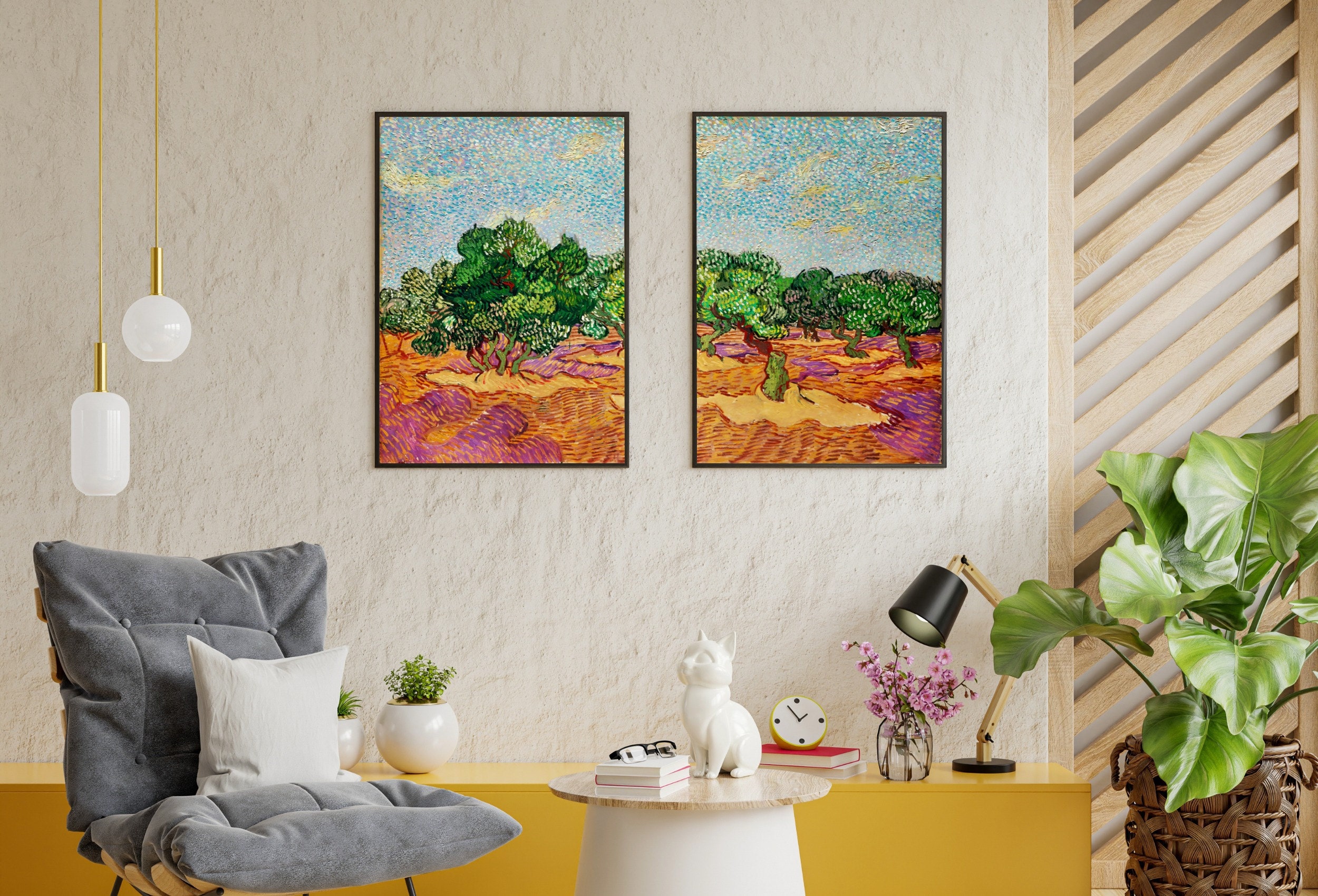
Bedroom: For a bedroom, I would suggest artworks that are calm, cozy, and romantic. You can use printable artworks that feature flowers, stars, hearts, or quotes, to create a relaxing and soothing atmosphere for your bedroom. You can also use printable artworks that have sentimental, inspirational, or love messages, to make your bedroom more intimate and meaningful. You can print your artworks on paper, canvas, metal, or wood, and display them with frames, clips, or place them on nightstands or walls. You can also use printable artworks that match the mood, color, or pattern of your bedding, pillows, or rugs, to create a cozy and comfortable look.
I hope you enjoyed this blog post and learned some tips and tricks for printing and displaying your printable artworks like a pro. Printable artworks are a great way to add some style and personality to your home.

